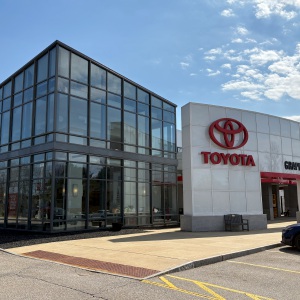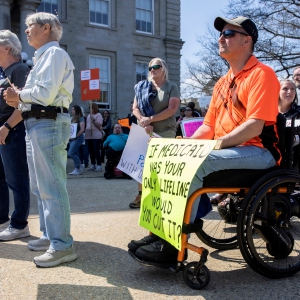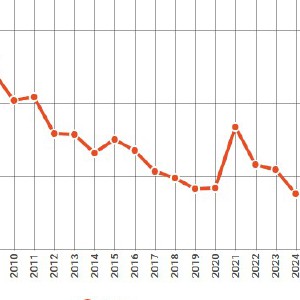Concord school board places $152 million cap on middle school project, moves forward to design phase

Concord School Board members discuss the middle school project prior to voting to set a $152 million cap on it. JEREMY MARGOLIS—Monitor staff
|
Published: 07-16-2024 3:55 PM
Modified: 07-16-2024 5:18 PM |
Despite expressing considerable discomfort with the potential price tag, Concord School Board members voted Monday to cap the controversial middle school building project at $152 million, paving the way for it to move forward to a four-month design phase.
The board arrived at the number after wading through various decisions about the elements of the building over the last month. In early June, the school district’s architectural firm had presented the board with a $136 million to $167 million price range for the project, which depended on what they wanted to include in the building.
Since then, the board has elected to cut the size of a proposed 900-seat auditorium in half to 450 seats and to reduce the total size of the building by 6,000 square feet. The board also decided to cut costs by eliminating a proposed greenhouse, outdoor classrooms, and a multi-floor exterior ramp.
But the board elected to retain a 9,000-square-foot gymnasium and four outdoor playing fields, all of which will be grass, rather than turf. A basketball court and an irrigation system for the fields are also part of the plan.
An ultimate decision on whether to complete the project has not been made and will not come until at least next June, when the district expects to learn whether it will receive state building aid. But, assuming the aid is awarded, the district wants to break ground on the project months afterward, so it is proceeding with the planning process now.
Now that the board has made key decisions on the scope of the project and set a price cap, the district’s architectural firm, HMFH Architects, Inc., will spend the rest of the year designing the building and will return with a more refined price estimate late this year or early next year. Under the current timeline, construction would begin in January 2026 and be completed by the summer of 2028.
The location of the middle school project, which has been in the works since 2016, has been the subject of bitter debate since the board voted on it last December. Critics of the Broken Ground location argue that the new school should be built in the current school’s location on the south side, rather than across town on the east side.
Some Concord residents have also argued that the cost of the project is too high. The most comparable recent school building project in the state – a project in Nashua approved in 2019 that involved renovating one middle-school building and constructing another – came in at $130 million. But, Concord school board members reiterated Monday, building costs have risen significantly since then.
Article continues after...
Yesterday's Most Read Articles
 ‘New Hampshire is just going to embarrass itself’: Former Child Advocate warns against proposed office cuts
‘New Hampshire is just going to embarrass itself’: Former Child Advocate warns against proposed office cuts
 Two of five Grappone auto franchises to be sold as part of family transition
Two of five Grappone auto franchises to be sold as part of family transition
 ‘Erosion of civil public discourse’ – Concord mayor makes plea for more civility
‘Erosion of civil public discourse’ – Concord mayor makes plea for more civility
 GOP lawmaker wasn’t fired over transgender bathroom comments, business owner says
GOP lawmaker wasn’t fired over transgender bathroom comments, business owner says
 ‘A large chunk of change’: Feathered Friend Brewing disputes tariff on Canadian import
‘A large chunk of change’: Feathered Friend Brewing disputes tariff on Canadian import
 ‘It's like slow genocide’: Crowd rallies against proposed Medicaid cuts
‘It's like slow genocide’: Crowd rallies against proposed Medicaid cuts
Estimates presented Monday for the property tax impact of a $152 million project landed at between $52.50 and $329 in the first year for a $350,000 property. The wide range depends on whether the town receives building aid, as well as whether it uses $8.5 million in contingency costs baked into the $152 million price.
Under the cheapest scenario presented, the district would receive $48.5 million in building aid and spend none of its contingency, a scenario that a member of the district’s architectural firm acknowledged was unrealistic. State law caps building aid at $50 million per year before lingering bond payments are applied. Earlier this year, a state official said about $30 million at most would be available for Concord in 2025.
Under the more realistic scenario, in which the district receives building aid but also spends the $8.5 million allocated in contingency, an owner of a $350,000 property would pay $101.50 in year one of the project, an expense that would continue at roughly the same rate for nine years under the model presented.
Nearly every board member acknowledged Monday that the price tag and corresponding tax impact were tough to stomach.
“If I could wave a magic wand and get this down to $130 [million], I would do it,” said Cara Meeker, the board’s secretary. “I will just be human in the moment and say the number makes me uncomfortable.”
School board member Bob Cotton proposed reducing the gymnasium by 3,000 square feet and withholding a decision on a baseball and softball field, which together would save approximately $1.3 million – both suggestions which were ultimately not formally proposed.
“I think we’re in a hard spot,” Cotton said. “I’d love to get the number down, but even the things I suggested are a million here, a million there.”
School board President Pamela Walsh said that if the board changed course and decided not to proceed, it would have to choose from three options which she argued were worse: rebuilding at the Rundlett site, renovating the current middle school, or holding off on making any decision at all.
The board voted 6-3 last December on the Broken Ground site because, among other reasons, they believed it would be approximately $5 million cheaper than building at the Rundlett site, its construction wouldn’t disrupt current middle schoolers, and it would serve an area of town that has an expanding population with a higher percentage of immigrants and low-income residents.
A renovation to the current building was rejected because it would be costly, maximally disruptive, and would come with more limited building opportunities, school board members said, while waiting to make a decision at all would only lead to a more expensive project.
Ultimately, the board voted unanimously (with board member Barb Higgins absent) to set the $152 million cap.
“I’m uncomfortable with this number as well,” said board member Jim Richards. “But I don’t believe prices of buildings are going down. . . . If we stop this and we wait 10 years from now, we’ll be talking about a $180 or $200 million.”







 Baseball: Slow night at the plate costs Concord in loss to Windham, 3-1
Baseball: Slow night at the plate costs Concord in loss to Windham, 3-1 New Hampshire births fell to a modern low in 2024
New Hampshire births fell to a modern low in 2024
